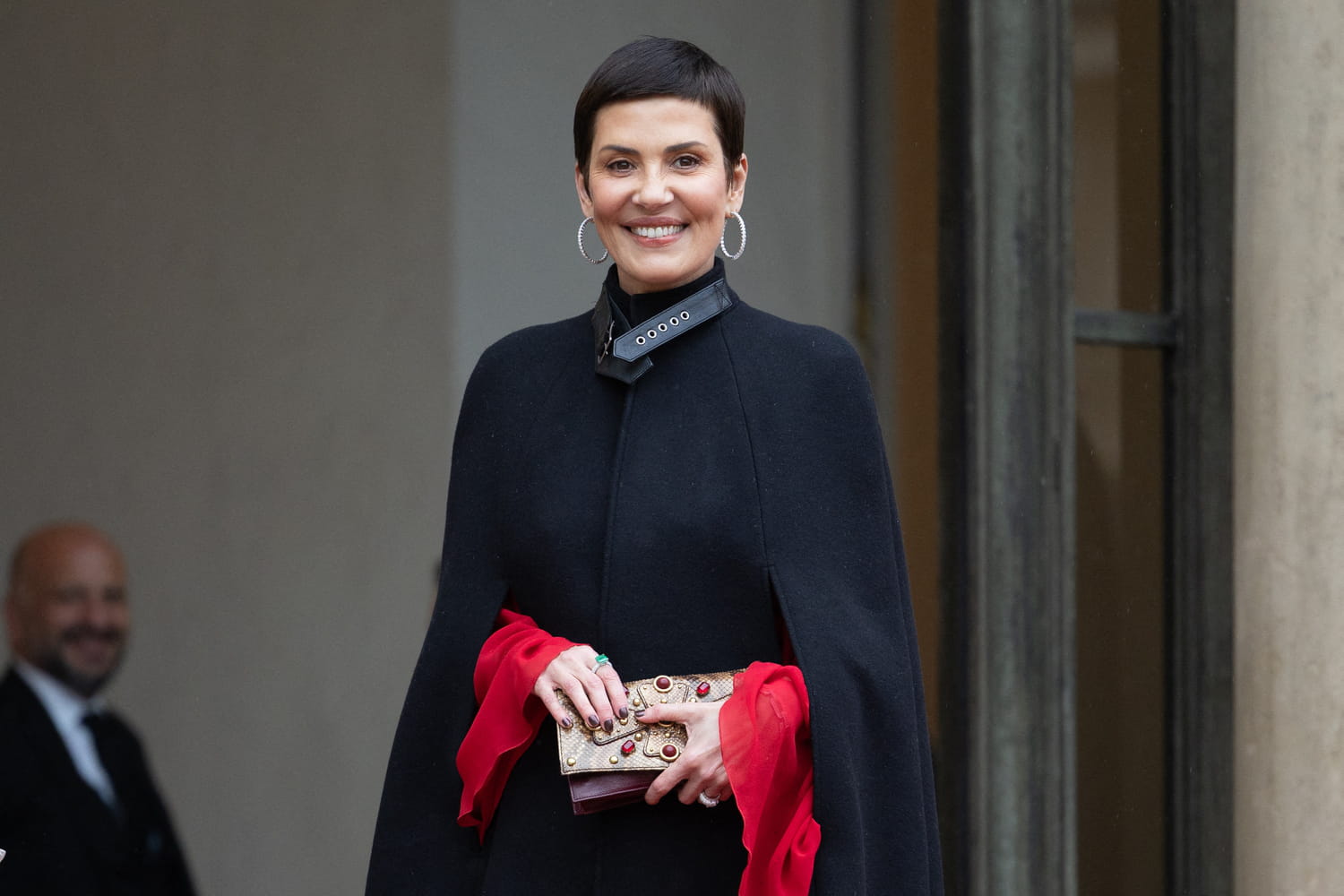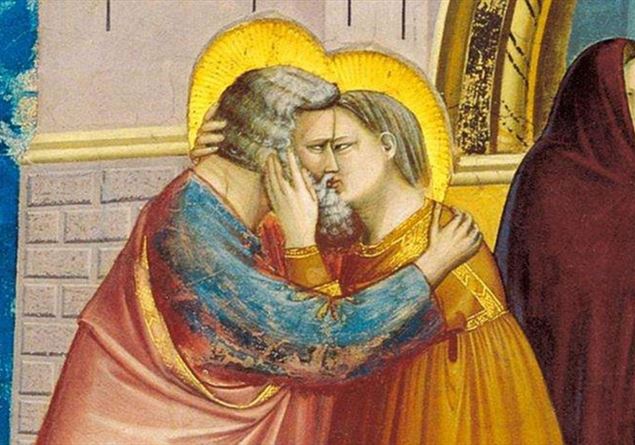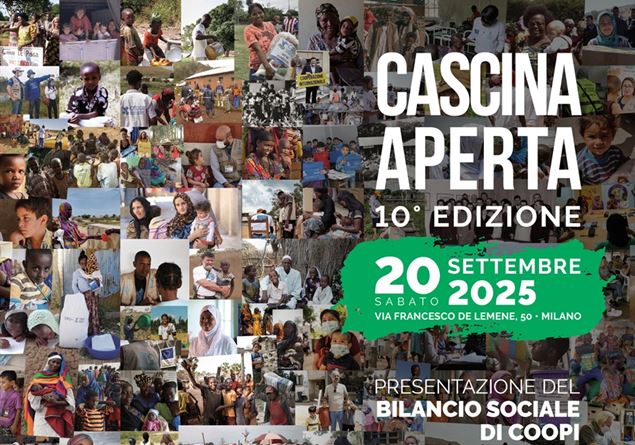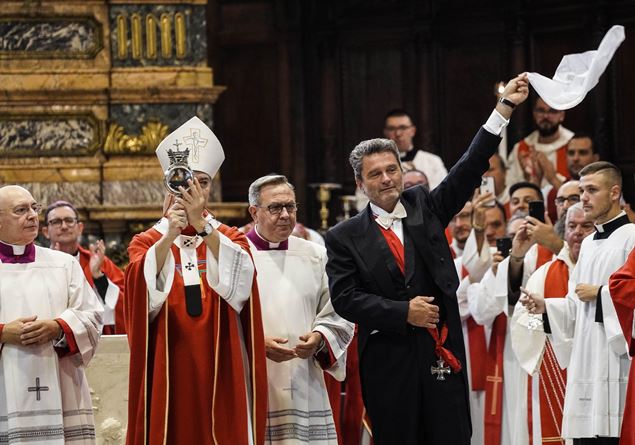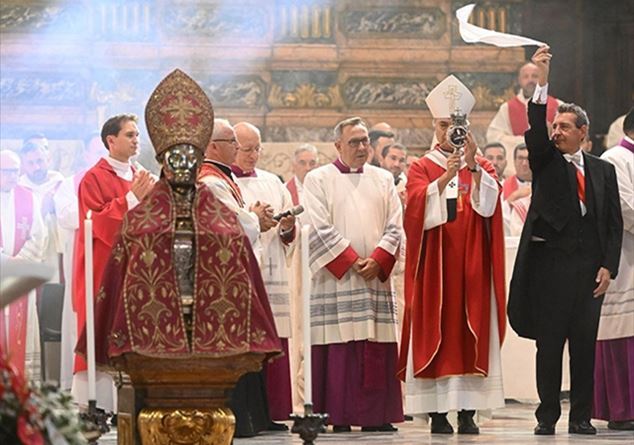The cult of the parents of the Virgin Mary was late in the West, with a shy beginning of around 900-1000, while in the Christian East already in the 6th century there were relevant liturgical manifestations, especially in connection with the Marian holidays such as the conception and the Nativity. Was Pope Gregory XII unifying their liturgical feast in 1584 on 26 July.
Anna’s name derives from the Hebrew Hannah (Grazia) While Gioacchino means, always from Hebrew, “God makes strong”. Although Di Sant’Anna there are few news and moreover not from official and canonical texts, his cult is extremely widespread both in the East and in the West.
Joseph Paelicnk, Holy Family with Saints Gioacchino and Anna
The silence of the canonical gospels
Paradoxically, of the two figures so important in the history of salvation there is no trace in the canonical gospels. Of them is treated widely in the protoVangelo of S. Giacomo, an apocryphal Gospel of the second century. The rear elaborations of this document gradually added other details, which only devotion was dictating. Anna was an Israelite of the tribe of Judah, daughter of the priest Bethlehemita Mathan, with descent therefore from the Davidica lineage.
The “Protovangelo di San Giacomo” It tells that Gioacchino, Anna’s bridegroom, was a pious man and very rich and lived near Jerusalem, near the probatic swimming pool source; One day while he was bringing his abundant offers to the Temple as he did every year, the great priest Ruben stopped him saying: “You don’t have the right to do it first, because you have not generated offspring“. Gioacchino and Anna were married who really loved each other, but they had no children and now given the age they would no longer have had; according to the Jewish mentality of the time, the great priest saw the divine curse on them, due to being sterile.
The elderly rich shepherd, for the love he brought to his bride, did not want to find another woman to have a son; Therefore grieved by the words of the Grand Priest went to the archive of the twelve tribes of Israel to check if what Ruben said was true and once he found that all the pious and observant men had had children, upset, he did not have the courage to return home and retired to his land of the mountain and for forty days and forty nights he begged the help of God, prayers and prayers. Anna also suffered from this sterility, to this was added the suffering for this ‘escape’ of her husband; So he put himself in intense prayer asking God to fulfill their implorestics of having a son. During the prayer an angel appeared to her who announced them: “Anna, Anna, the Lord has listened to your prayer and you will conceive and give birth and you will talk about your offspring all over the world“Thus it happened and after a few months Anna Pitorì. The” Protovangelo di San Giacomo “concludes:” After the necessary days he purified himself, he gave the stern to the girl by calling her Mary, that is “favorite of the Lord” “.
The meeting at the Aurea Porta
The oriental iconography highlights making it famous, the meeting at the city door, of Anna and Gioacchino who returns from the mountain, known as “The meeting at the Aurea door” of Jerusalem; Aurea because golden, of which there is no historical news. The most parents, grateful to God of the gift received, grew with love the little Mary, who at three years was led to the temple of Jerusalemto be consecrated to the service of the temple itself, according to the promise made by both, when they implored the grace of a child.
After the three years of age, Gioacchino no longer appears in the texts, while Anna is still mentioned in other subsequent apocryphal gospels, which they say they lived until the age of eighty years, moreover it is said that Anna was widowed married two more times, having two children whose offspring is considered, especially in the German -speaking countries, such as the “holy parental” of Jesus.
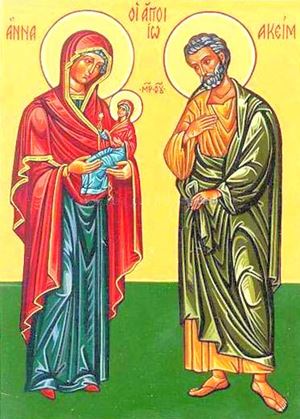
Santi Gioacchino and Anna with the Virgin Mary, Byzantine icon
Cult
The cult of Gioacchino and Anna spread first in the East and then in the West (also following the numerous relics brought by the crusades); The first manifestation of the cult in the East dates back to the time of Justinian, who had a church in Costantinople built in approx. Anna. The affirmation of the cult in the West was gradual and later in time, its image is already located among the mosaics of the triumphant arch of S. Maria Maggiore (sec. V) and among the frescoes of S. Maria Antiqua (VII century); But his cult began to the 10th century in Naples and then gradually extending to other locations, until he reached the maximum diffusion in the fifteenth century, to the point that Pope Gregory XIII (1502-1585), decided in 1584 to insert the celebration of s. Anna in the Roman Missalextending it to the whole Church; But his worship was more intense in the countries of northern Europe also thanks to the book by Giovanni Trithemius “Tractatus de laudibus Sanctissimae Annae” (Mainza, 1494).
Gioacchino was left discreetly on the sidelines for long centuries and then inserted in the celebrations on a different date; Anna on July 25 by the Greeks in the East and on July 26 by the Latins in the West, Gioacchino since 1584 was remembered first on March 20, then in 1788 to Sunday of the Eighth of the Assumption, in 1913 he settled on August 16, until he reunited in the new liturgical calendar, at his wife on July 26.
Protector of the parturious
The mother of the Virgin is the owner of various patronage almost all linked to Mary; Since he brought the hope of the world to his womb, his cloak is green, for this reason in Brittany where they are very devoted to it, is invoked for the collection of hay; Since he kept Mary as a jewel in a casket, he is the patron saint of Orefici and Bottai; Protects miners, carpenters, carpenters, bubbles and turners. Because he taught the Virgin to clean the house, to sew, weave, He is the patroness of the crash manufacturers, the weavers, the tailors, manufacturers and traders of canvases for the home and linen.
Is above all the patron saint of family mothersof widows and is invoked in difficult parts and against marital sterility. The eaters are addressed to her to obtain three great favors from God: a happy birth, a healthy son and sufficient milk to be able to breed him
